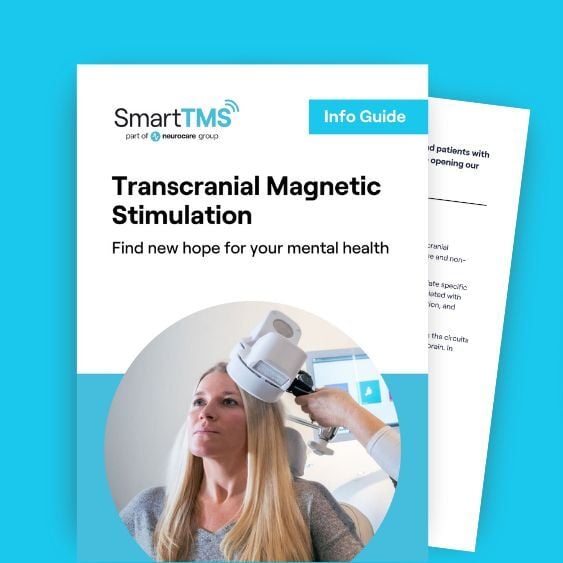Eating Disorders: A hidden pandemic
May 23, 2023 - Smart TMS

Eating disorders (EDs) are complex medical and psychiatric conditions characterised by disturbed eating patterns, poor body image and extreme preoccupation with weight and shape. Behaviours can also include excessive exercise, laxative abuse, binging and purging, to achieve very low body weights. The impact on physical health means these disorders can be deadly if left untreated.
Recent years have seen a concerning rise in the number of people screening positive for an ED, about 16% in 2019 compared to about 8% in 2007 (NHS digital, 2020). This trend poses significant strains on the NHS resources and economy. For instance, 24000 ED-related hospital admissions were reported in England in 2020. With only 455 dedicated beds in high-risk settings, this highlights the need to tackle what has been named the ‘hidden pandemic’ (NHS Digital, 2021).
Significant progress has been made in our understanding of Eating Disorders
Researchers have found that contributing factors to development span across our biology, personality and social environment. A number of environmental factors have now been linked to the recent rise in EDs. These include:
- Social media: The rise of social media has been associated with increased body dissatisfaction, As users are bombarded with images of the “perfect” body. This can lead to disordered eating behaviours in an effort to achieve the idealized body type.
- Diet culture: The rising popularity of the health and diet industry has created a cultural obsession with the latest dietary trends and weight loss. It has created an environment where people feel pressured to follow certain trends to achieve a specific body type.
- Food availability: The abundance of highly processed and calorie-dense foods has made it easier for people to overeat. Leading to weight gain and an increased risk of developing EDs.
- Stress and anxiety: The pressures of modern life, including the recent Covid pandemic, as well as academic and professional demands, can lead to high levels of stress and anxiety. These feelings can trigger EDs as a coping mechanism.
Treatment for Eating Disorders
Unfortunately, the development of effective treatment options has not kept up with the pace of research. Currently, the most common treatments for EDs are psychotherapy, medications, and nutritional counselling. While these treatments can be effective, they are not always sufficient for the long term.
One promising area of research is the use of neuromodulation interventions. An example of this is Transcranial Magnetic Stimulation (TMS), to target specific areas of the brain involved in ED symptoms. For example, Transcranial Magnetic Stimulation (TMS) treatment can be used to stimulate the dorsolateral prefrontal cortex, which is involved in the regulation of mood and impulse control, or the insula, which is involved in the perception of body sensations and the awareness of hunger and fullness.
TMS can also be used to modulate the activity of the reward pathways in the brain, which may help to reduce cravings for high-calorie foods and improve the ability to make healthier food choices. While TMS holds promise as a potential treatment, more research is needed to determine its long-term effectiveness and safety.
What’s next for EDs?
Overall, significant progress has been made in understanding the causes of EDs, however in the face of our rapid-changing environment, the development of effective treatment options has fallen behind. Neuromodulation techniques hold promise but have a way to go before becoming routine treatments. There remains an urgent need for more personalized and comprehensive treatment approaches that address the complexity of these disorders.
Author, Rio,
Smart TMS London Practitioner
References
NHS Digital (2020, December 15). Health Survey for England 2019. NHS Digital.
NHS Digital . (2021, October 15). Hospital Admissions for Eating Disorders. NHS Digital.










